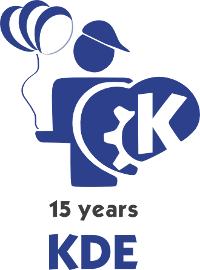CC-BY-NC-SA by __Dori__ @ flickr
In the last days I read two post on planetkde and planetsuse, written by (to me) new contributors with the best intention to help their projects. However the response of the community was not as positive as they would have expected. What happened?
3 types of potential new contributors
Some lines from
my last years Akademy paper.
"Krogh, Spaeth and Lakhani analyzed the characters of potential new contributors in mailing lists.[12] Based on that work three types could be found.
- Proactive problem-solver: They use the program, find a bug, and work out the solution. In the first mail to the list they send the patch. These people are very successful in communities and often become continuous contributors.
- Waiting volunteer: This group offers their abilities to the community and waits until they get a job allocated. In general this character is not very active. Most communities can not integrate them successfully.
- Visionary: They use the program and have ideas on how the program should be improved. Although visions and aims are important in communities, the character-type visionary is not successful. In the past his/her visions were not identical with the ideas of the code developers. The resulting costs of conflicts exceed the benefits of the discussion."
Even the headline of one of the post gives you a hint which type might be behind the post in question. Visionaries often use words like "it should", "you have to" etc. instead of "I have done" or "I am going to do".
Results matter - words do not
In open source communities the developers decide what they do. They want to get work done. In most cases they have a vision for their project and not enough time to do as much as they would like to. That's one of the reasons why
achievement is the currency. Talking and writing visions is not. If you want a change - do it.
This does not mean, that your contribution is not appreciated. The contrary is the truth.
Contributions that make a difference
KDE as well as
openSUSE have special pages to guide new contributors. They propose your first steps into the project. (You will find other useful information about how to start contributing at
openhatch a plattform to bring new contributors and projects together.)
Contributions that make a difference are contributions which are important and valuable from the perspective of the community; things the developers want to get done. Help them and you will succeed.
Junior Jobs (JJ) are a good starting point as well.
Start now doing things!
There is really a lot to do. Your contribution is very welcome. Visions are important in communities, but they are not the best point to start with.
Instead, grab a task the community needs to be done. Inform yourself first, invest some time and love. Then contact the mailing list and post your questions or ask for a mentor. Present a solution and be amazed by the positive feedback you might receive.
Good luck!
P.S.: If you have an idea how the program could be improved use the provided tools (the
brainstorm section in the KDE forum is the place for your are locking for; more experienced users could open a feature request at bugs.kde.org; openSUSE has
openFATE.) or contact the developers on the mailing list.
 Whoooo. Just 2 more days until KDE can celebrate the 15th birthday. Have you prepered your presents ;-)
Whoooo. Just 2 more days until KDE can celebrate the 15th birthday. Have you prepered your presents ;-)




















